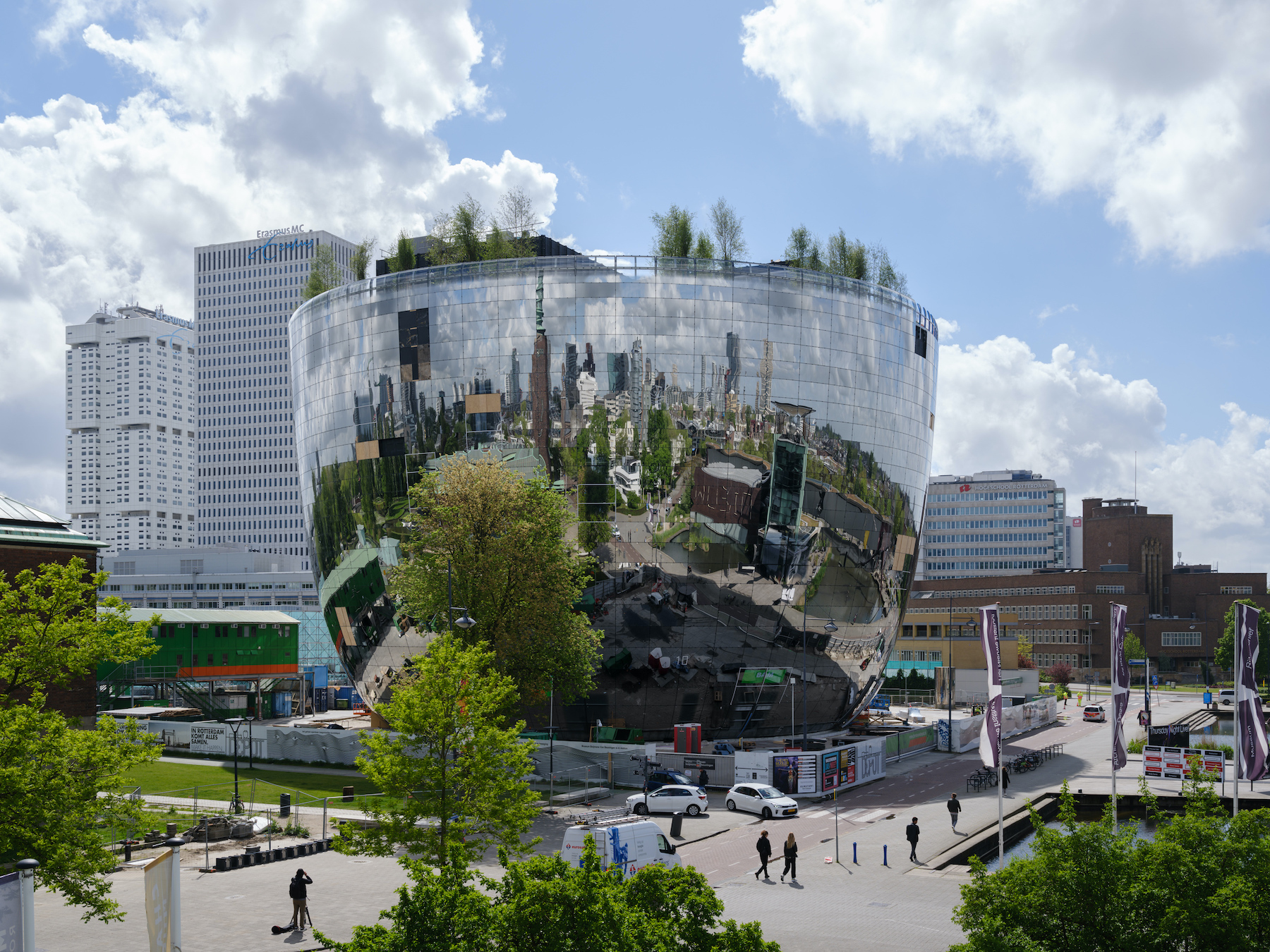The Design Dispatch offers expertly written and essential news from the design world crafted by our dedicated team. Think of it as your cheat sheet for the day in design delivered to your inbox before you’ve had your coffee. Subscribe now.
MVRDV’s mirrored building will become the world’s first public art depot.
The architecture firm MVRDV has completed work on the Depot Boijmans Van Beuningen, which will become the world’s first publicly accessible art depot. Known for wildly imaginative projects the world around, the Dutch firm designed a bow-shaped structure clad entirely in 1,664 mirrored panels that reflect Rotterdam’s surrounding Museumpark. “We didn’t want to design a building that would compete with the many museums it was surrounded by,” MVRDV partner Fokke Moerel tells AD. “We wanted it to be open to and for all, since it’s a very democratic building. It’s like a painting, reflecting the complete skyline of Rotterdam, plus the ever-changing sky, like life in a painting.” When it opens, in fall 2021, the 160,000-square-foot building will house 150,000 artworks that wouldn’t otherwise be available for public viewing.
Frank Gehry’s long-delayed The Grand is an optimistic gamble.
California may be burning and experiencing a long-term housing crisis, but that hasn’t stopped construction from forging ahead on The Grand, a long-delayed mega-development in Downtown Los Angeles conceived by Related and designed by Frank Gehry. Priced at $1 billion and underway for more than 16 years, the shimmering development will feature a luxury residential tower, an Equinox Hotel, a movie theater, upscale retailers, and chef-driven restaurants when it opens in 2021. It’s also supposed to serve as an economic beacon for Grand Avenue’s arts district—home to the Broad Museum, the Walt Disney Concert Hall (also by Gehry), and The Music Center—though that remains to be seen as social distancing regulations have yet to be lifted and businesses still aren’t operating at full capacity.
Black museum trustees band together to create institutional change.
Aiming to facilitate meaningful change after widespread Black Lives Matter protests, a group of Black museum trustees have banded together to create the Black Trustee Alliance for Art Museums. Its founders, which include collectors AC Hudgins, Denise Gardner, and Troy Carter, were motivated to launch the steering committee following the decision by four museums to postpone a Philip Guston retrospective because of its images of the Ku Klux Klan—a highly controversial move that sparked fierce backlash and allegations of self-censorship within the art world. The alliance’s mission, per a written statement, is to “increase inclusion of Black artists, perspectives, and narratives in U.S. cultural institutions by addressing inequalities in staffing and leadership, combating marginalized communities’ lack of presence in exhibitions and programming, and incorporating diversity into the institution’s culture.”
A stash of steamy Duncan Grant drawings are found under a bed.
An extraordinary long-lost trove of more than 400 erotic drawings by Duncan Grant are finally seeing the light. A key member of the Bloomsbury group and one of the most renowned 20th-century British artists, Grant sketched hundreds of explicitly queer drawings throughout the 1940s and ‘50s that were influenced by Greco-Roman traditions and the era’s popular physique magazines. Though Grant handed down the collection of drawings to a close friend in 1959, they were thought to be destroyed; that is, until the retired theatre designer Norman Coats offered them up to Nathaniel Hepburn, director of the Charleston Museum, which occupies the Sussex farmhouse that Grant once called home. Darren Clarke, head of collections at the Charleston, describes the drawings as the definitive “Kama Sutra of Duncan Grant’s sexual imagination.”


